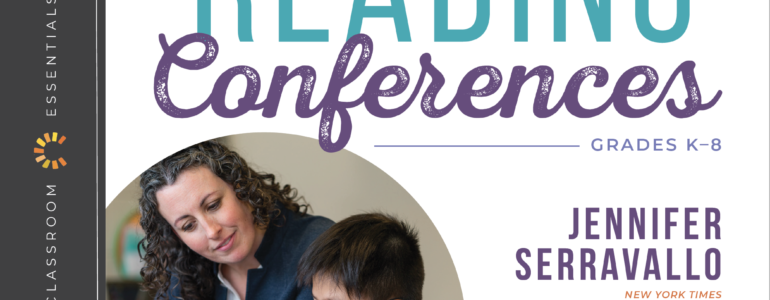By: Jen Serravallo
Last fall, about a month into the school year, a reading specialist emailed me for help with a very common problem. I wrote back to her directly but realized that because what she asks about is so common, perhaps more would like to spy on our exchange and think about their own classrooms. I wish you a wonderful start to the school year and lots of joyful hours spent reading in this year ahead.
Hello!
I was wondering if you could help me with something we’re encountering with our 5th and 6th graders. They are abandoning books and not finishing them. Students say they are bored and give up on texts. Beyond the obvious reasons and solutions, what can we try to get them to stick with a book, work through the boring parts, and finish them?
Thank you!
Anna
Reading Specialist
Hi Anna,
It’s hard to know exactly what will work without meeting or talking to your kids, but I do have a few ideas. But before I share them, I want to confess that I actually abandon books sometimes. Do you? Sometimes a book I thought I’d love really is boring – why struggle through a boring book when there are so many great ones? Sometimes a different book grabs my attention and I end up hopping over to that one. I do finish books that are good, so I’m not worried about my reading life. So I would encourage you to allow for some abandoning of books – I think it’s a normal part of being a reader for many people. That said, here are a bunch of things you might consider to try to get kids into books they will love from the start:
- Do a really critical examination of the books you’re offering kids, and ask the kids for feedback on what you’re offering. Which books reflect their identities, cultures, interests, experiences, language, family structures? Along those same lines, ask kids to tell you what they want — maybe give them an book catalogue order form, some time on the web to browse, and/or take them on a trip to a bookstore. Have them make a wish list. What do you notice about the books they want to read? How do they compare to what you already have?
- Do an interest survey that asks about their favorite movies, TV shows and involve them in coming up with names for bins in your library based on their interests (i.e. “Books That Will Make you Cry” or “Sports Stars” or “Powerful Female Protagonists”). Include them in resorting what you do have so they can think of their identities first when they go looking for new books.
- As they are choosing their books, you could try to encourage them toward books that you (and they) might consider on the “easy” side. My guess is that reading whatever they are currently reading may be presenting them with some struggle and their comprehension is possibly shaky. It’s no fun to read books you aren’t understanding!
- Give them lots of access to graphic novels. The books are deceptively sophisticated and the visuals can provide support for comprehension overall, and visualizing specifically.
- Do book talks, and maybe read the first chapter of a book they might love, and leave the books on ledges around the room. Highlight something about the book that you know will be a draw – the suspense, the hilarious main character, the real-life issues.
- Show book trailers/commercials from publishers that will help do the “selling” for you and get them excited to check the books out.
- Give kids time to talk books to each other. Set them up in partnerships or book clubs and let them choose books together, then set aside time a couple of times a week for them to talk. Knowing they will talk with a friend about their book might encourage them to stick with it and get ideas to talk about.
- Confer with kids regularly. Talk to them about their book choices, how engaged they are with the book, how it compares to past choices. Check-in on their comprehension, and offer strategies to support them with things they need. Offer them positive feedback with ways they might be engaging with the text – using prior knowledge, slowing down to visualize what they are reading, finding more time each day to read to get into their book, and so on.
- Ask your school librarian for help. Librarians know what’s just been released, what’s on the horizon, and what the hottest books are for the grade level this year.
I hope those help!
Jen
Jennifer Serravallo is a literacy consultant, speaker, and the author of several popular titles including the NY Times Bestselling The Reading Strategies Book, The Writing Strategies Book, and Understanding Texts & Readers. A Teacher’s Guide to Reading Conferences takes a closer look at the purposeful, responsive instruction that takes place while conferring. Her latest publication, Complete Comprehension, is a revised and reimagined whole book assessment and teaching resource based on the award-winning Independent Reading Assessment. She was a Senior Staff Developer at the Teachers College Reading and Writing Project and taught in NYC public schools. Twitter: @jserravallo | Instagram: @jenniferserravallo | Website for Jen Seravallo, Click Here
![]()













